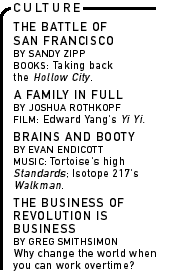

|

|

|

|
| |
 |
|
|
They target well-meaning Americans with direct mail and telephone calls describing conditions of poverty, hunger and despair in Indian country. Inevitably, the pitch ends with a plea for potential donors to open their hearts and wallets to a charity or relief organization that claims to address these dire conditions. But donors should be wary of a growing number of charities that purport to alleviate poverty in American Indian communities but instead use donated funds to stuff their own coffers. "There are many, many non-Indian operations that use Indians as a way of garnering revenue," says Jerry Reynolds of the First Nations Development Institute, a Fredericksburg, Virginia-based nonprofit. The number of Indian-themed charities has been increasing steadily over the past 10 years, and the money has been flowing to non-Indian organizations in record amounts. Charitable organizations are latching on to Native American causes because they are an
The location of reservations in America's rural outposts keeps shoddy charity programs hidden from scrutiny. "There are so many needs out there that it leaves the door open for opportunistic ventures. There's a lack of oversight from the funding agencies to see if these groups are legitimately serving native communities," says Donna Chavis, executive director of Native Americans in Philanthropy, a North Carolina-based advocacy group. American Indian communities are among the nation's poorest, so donated goods and services are usually welcomed regardless of how they are obtained. "People aren't knowledgeable about the full amount that's being raised. It's real difficult when you're dealing with any kind of poverty stricken area; any kind of assistance is looked at as very beneficial," explains Ken LeDeaux, a former business manager for the Rosebud Sioux tribe who says he keeps a close eye on charity activities in the area. Shady operations also may proliferate because government oversight of charities is sorely lacking. The Supreme Court has forbidden states from setting limits on what percentage of a charity's contributions must be spent on programs, and the majority of charities have gross receipts of less than $25,000--making them exempt from releasing their tax information to the public. For that reason, the inner-workings of two-thirds of American charities remain a mystery. One rogue charity, the Rapid City, South Dakota-based American Indian Relief Council (AIRC), gained notoriety in the early '90s when it was accused of dumping useless textbooks and outdated gardening seeds on the Sioux reservation as part of its relief program. One of the AIRC's largest services was its employment-training program, which consisted of hiring Native Americans to make fundraising calls. Employees blew the whistle on the organization's dubious fundraising pitches, which they said were manipulative exaggerations and lies. They complained that the money the AIRC raised for Native Americans wasn't making it to the reservations. Eventually the Pennsylvania Attorney General's office sued the AIRC in 1993 for lying to donors about certain reservations, claiming they were hit by catastrophic natural disasters and needed funds to prevent famine and death. The lawsuit also charged that the AIRC overvalued the prices of goods it donated to tribes--like the expired seeds--listing them at market value. In 1999, AIRC President Brian Brown settled the lawsuit and agreed to pay the state $350,000. But instead of shutting down the AIRC, Brown--who had previously been sued by the attorneys general of Connecticut and Pennsylvania in 1991 for inflating commodity values and deceiving donors--discreetly downsized the group's South Dakota operations and shifted its focus to the American Southwest. The AIRC has been born anew under a different parent organization, National Relief Charities (NRC), which operates two new subsidiaries--the Council of Indian Nations and Southwest Indian Relief--in Apache Junction, Arizona. Brown keeps a low profile in his current office, tucked away in a nondescript industrial park outside of Portland, Oregon. However, the charity's makeover is entirely superficial. The NRC is still distributing a pitiful portion of its revenues to the constituency it purports to serve. According to the NRC's 1999 federal tax filings, it earned more than $8.3 million in donations last year, but only 30 percent was spent on programs. In contrast, Brown's salary has hovered at about $120,000 for the past two years. The National Charities Information Bureau, an Arlington, Virginia-based watchdog group, suggests charities should spend a minimum of 60 percent of total expenditures on programs and services, with the available balance going to fundraising and administration.
|

